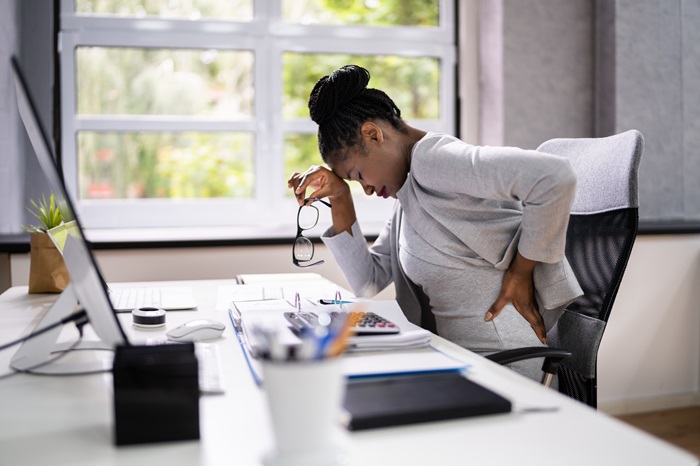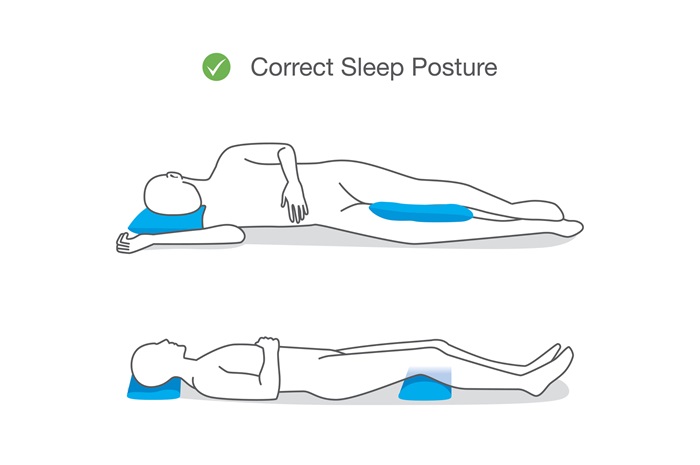In this comprehensive guide, we’ll explore the journey of recovery after experiencing back pain, highlighting the transformative path from discomfort to wellness. Whether you’re just beginning your journey or are well on the way to reclaiming your life, this post is dedicated to offering insights, hope, and practical advice. Join us as we delve into the nuances of healing, the importance of personalized care, and the empowering steps you can take towards a pain-free, active lifestyle.

Recovery time for common back procedures
Recovery times for back procedures can vary significantly based on the type of treatment and the individual patient’s condition. Here’s a brief overview of common procedures and their typical recovery timelines:
- Lumbar Discectomy: For a lumbar discectomy, which involves removing part of a herniated disc to relieve pressure on spinal nerves, patients can often return to light activity within a few weeks. Full recovery may take 4 to 6 weeks, depending on the individual’s overall health and adherence to post-operative care.
- Spinal Fusion: Spinal fusion, a surgery to join two or more vertebrae, has a longer recovery period. Patients may need to wear a brace and limit activities for several months. Complete healing and return to normal activities can take 6 to 12 months.
- Laminectomy: In a laminectomy, part of the vertebrae is removed to relieve pressure on spinal nerves. Recovery typically requires 2 to 6 weeks, with patients gradually resuming activities as comfort allows.
- Epidural Steroid Injections: These injections, used for pain relief, have a minimal recovery time. Most patients can resume normal activities the next day, although full effects of the injection may take up to a week to manifest.
- Kyphoplasty: After kyphoplasty, which treats spinal fractures, patients often report immediate pain relief. Recovery generally involves a few days of rest, with a return to normal activities within 6 to 8 weeks.
Experiencing back pain?
Or Call Us at 504-327-5857
What the road to recovery from back pain looks like
Recovering from back pain, especially after a procedure, is a gradual process. Here’s an overview of what the typical recovery timeline might look like:
- First 24 Hours: In the first day after a back procedure, rest is crucial. Pain management is a priority, often involving prescribed medications. Mobility may be limited, and assistance with basic activities is usually necessary. It’s a time for the body to initiate healing under close observation, either in a hospital or at home.
- Next 3 Days to a Week: During this period, patients usually start to regain mobility. Pain and discomfort are still present but begin to decrease. Light activities, like walking, are encouraged to promote circulation and healing. It’s important to follow the doctor’s advice on activity levels and pain management during this phase.
- 3 to 6 Weeks Out: By this time, patients often see noticeable improvements. Pain is significantly reduced, and normal activities can gradually resume. Physical therapy might begin, focusing on strengthening the back and improving flexibility. However, heavy lifting and strenuous activities are still off-limits to avoid strain on the healing back.
- 2 to 3 Months and Beyond: This stage marks a more advanced phase of recovery. Patients may return to most of their normal activities, including work, depending on the nature of their job. Ongoing physical therapy and exercises are crucial to maintain strength and prevent future issues. Regular follow-up appointments are essential to monitor progress and adjust treatment plans as needed.
Things you can do to improve your recovery
Recovering from back pain is a journey that involves more than just medical treatments. Here are some proactive steps you can take to enhance your recovery:
- Adhere to Your Treatment Plan: Follow your doctor’s instructions, including medication use and post-procedure care.
- Participate in Physical Therapy: Regularly attend therapy sessions and perform prescribed exercises at home to strengthen and regain flexibility.
- Eat Healthily: Consume a balanced diet rich in nutrients for tissue repair and hydration.
- Stay Moderately Active: Engage in light activities like walking to prevent muscle stiffness.
- Maintain Good Posture: Be conscious of posture while sitting and standing to ease back stress.
- Use Heat and Cold Therapy: Apply as recommended to relax muscles and reduce inflammation.
- Manage Stress: Employ relaxation techniques such as meditation or yoga to reduce muscle tension.
- Avoid Tobacco, Limit Alcohol: Smoking and excessive alcohol can hinder the healing process.
- Prioritize Sleep: Ensure quality rest and maintain a regular sleep pattern for optimal recovery.
- Sleep on your Back: This position is often recommended as it evenly distributes weight and minimizes pressure points. Place a pillow under your knees to maintain the natural curve of your spine. A small, rolled towel under the small of your back can also provide additional support.
- Side Sleeping: For side sleeping, bend your legs slightly and use a knee pillow to ease back stress. Ensure your mattress is supportive enough to keep your spine aligned.
- Stomach Sleeping: Avoid stomach sleeping to prevent neck and back strain. If necessary, place a pillow under your pelvis to support your spine’s curve.
- Mattress and Pillow Selection: Choose a medium-firm mattress and a pillow that aligns your head and spine for optimal support.
- Using Adjustable Beds: With an adjustable bed, slightly elevate your head and knees to alleviate back pressure.

What activities can you do after back surgery?
Recovery after back surgery is a gradual process, and reintroducing activities must be done with care. The following outlines what a typical road to recovery looks like, but please consult with your doctor before attempting these activities. Here’s a guide on what you can typically do after back surgery:
Immediate Post-Surgery (First Few Weeks)
- Walking: Start with short, gentle walks. Walking is one of the best activities post-surgery as it enhances circulation and aids in recovery.
- Stretching: Gentle stretching, as advised by your doctor or physical therapist, can help maintain flexibility without straining your back.
1-3 Months Post-Surgery
- Gradual Increase in Walking: Gradually increase the duration and pace of your walks.
- Swimming: Once cleared by your doctor, swimming can be a great low-impact exercise to strengthen your back.
- Light Household Tasks: Engage in light household chores like cooking or dusting. Avoid bending, twisting, or lifting heavy objects.
3-6 Months Post-Surgery
- Regular Exercise Routine: You may start a regular exercise routine, including low-impact aerobic activities, under medical guidance.
- Cycling: Stationary cycling can be a good way to build endurance and leg strength without putting too much stress on your back.
- Yoga or Pilates: Gentle yoga or Pilates, focusing on core strength and flexibility, can be beneficial. However, avoid intense or advanced poses.
6 Months and Beyond
- Return to Normal Activities: Most people can return to their normal activities, including more strenuous exercises, but it’s crucial to do so cautiously and listen to your body.
- Golf or Tennis: You may be able to return to sports like golf or tennis, focusing on proper technique to avoid strain.
What’s the risk of back pain returning?
The risk of back pain recurrence post-treatment varies depending on several factors, including the original cause of the pain, the type of treatment received, and lifestyle choices. For many, back pain can diminish significantly after treatment, but there’s always a possibility of its return, especially if underlying causes aren’t properly addressed.
Factors that can increase the risk include inadequate rehabilitation, premature return to strenuous activities, poor posture, and a lack of regular exercise. Conditions like degenerative disc disease or chronic ailments can also contribute to recurring pain.
To mitigate these risks, it’s crucial to follow a comprehensive rehabilitation plan, which often includes physical therapy, regular exercise, and lifestyle modifications. Maintaining a healthy weight, practicing good ergonomics, and using proper lifting techniques are essential preventive measures. Additionally, ongoing self-care practices, like regular stretching and stress management, play a significant role in preventing the recurrence of back pain.
Ultimately, while there is a risk of back pain returning, adopting a proactive approach towards health and wellness can significantly reduce this risk and promote long-term back health.
What should you do if back pain returns?
If you experience a recurrence of back pain after treatment or surgery, it’s important to approach the situation with care. Here are steps you should take:
- Don’t Ignore the Pain: Acknowledge the return of pain and avoid activities that exacerbate it. Pushing through pain can worsen the condition.
- Consult Your Healthcare Provider: Schedule an appointment with your doctor to discuss the returned symptoms. They may recommend imaging tests to understand the cause.
- Review Your Activities: Reflect on recent activities that might have contributed to the pain, like lifting heavy objects or a change in exercise routine.
- Return to Pain Management Basics: Use non-invasive pain management techniques like applying heat or cold packs, gentle stretching, or over-the-counter pain relievers, as advised by your doctor.
- Modify Your Routine: Temporarily adjust your daily routine to incorporate more rest and less strenuous activities.
- Consider Physical Therapy: Physical therapy can be reintroduced or adjusted to help alleviate the pain and strengthen the back muscles.
- Keep a Pain Diary: Documenting your pain can help identify patterns or triggers, which can be useful for your healthcare provider.
Remember, a return of back pain doesn’t necessarily mean a setback. With proper care and adjustments, you can manage the symptoms and continue on your path to recovery.
When should you see a doctor for back pain?
Seeking medical attention for back pain is crucial, especially in certain circumstances. You should see a doctor if:
- Pain Persists: If your back pain lasts more than a few weeks despite home care and over-the-counter treatments.
- Severe Pain: If the pain is intense and debilitating, hindering your daily activities.
- Radiating Pain: If pain extends to other parts of the body, like the legs, or is accompanied by numbness or tingling.
- Post-Injury Pain: If the pain follows an accident, fall, or injury.
- Accompanied Symptoms: If you experience symptoms such as unexplained weight loss, fever, or bladder and bowel problems along with back pain.
Understanding and effectively managing back pain is key to maintaining your quality of life. If you’re experiencing back pain or have concerns about your recovery, don’t hesitate to reach out to us at Lonseth Interventional Pain Centers. Our team of experts is here to guide you through a personalized treatment plan. Contact us today to take the first step towards a pain-free life.
